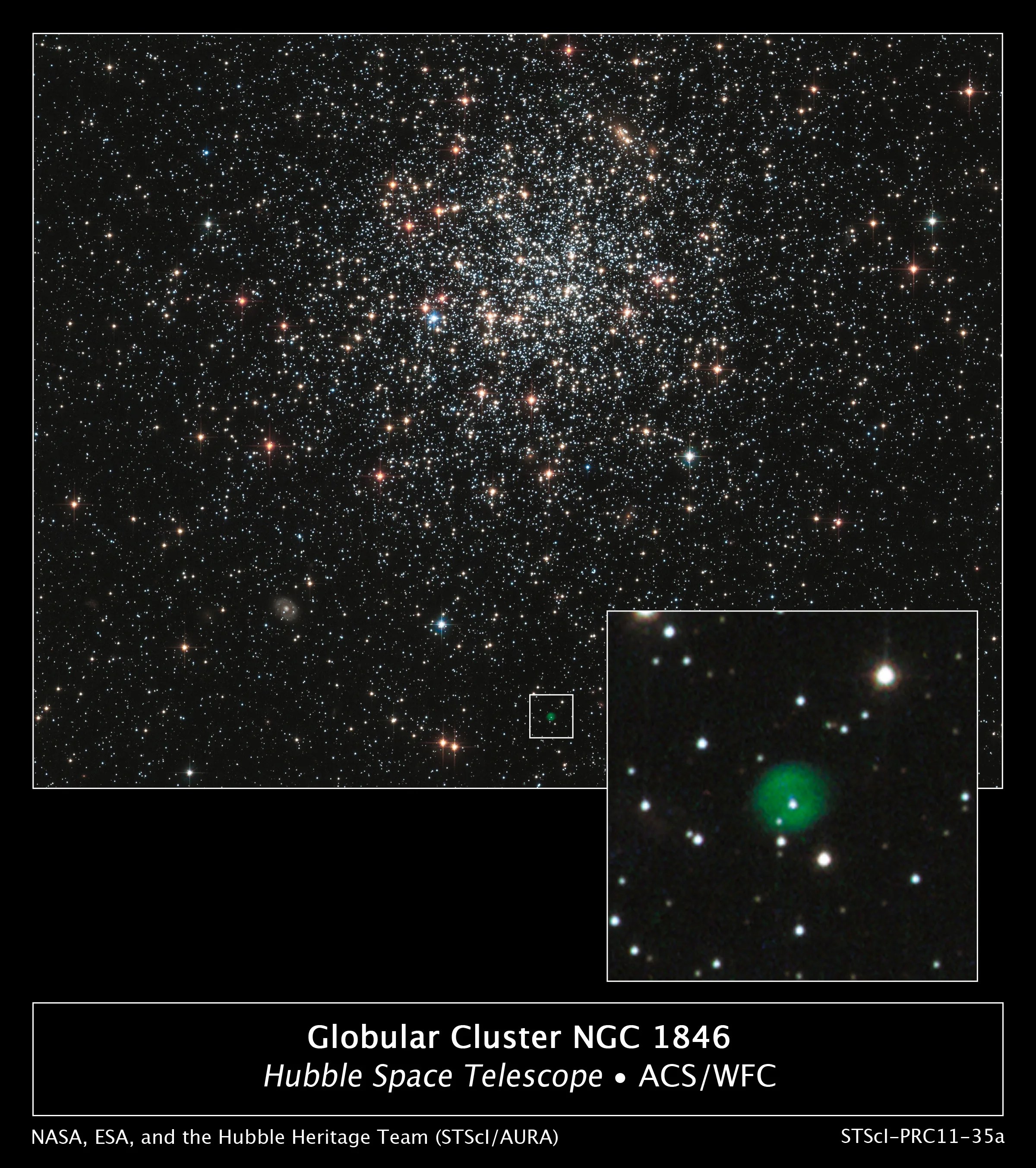2 min read
A new NASA Hubble Space Telescope image shows globular cluster NGC 1846, a spherical collection of hundreds of thousands of stars in the outer halo of the Large Magellanic Cloud, a neighboring dwarf galaxy of the Milky Way that can be seen from the southern hemisphere.
A new NASA Hubble Space Telescope image shows globular cluster NGC 1846, a spherical collection of hundreds of thousands of stars in the outer halo of the Large Magellanic Cloud, a neighboring dwarf galaxy of the Milky Way that can be seen from the southern hemisphere. (Credit: NASA and the Hubble Heritage Team, STScI/AURA; Acknowledgment: P. Goudfrooij, STScI)
|
Aging bright stars in the cluster glow in intense shades of red and blue. The majority of middle-aged stars, several billions of years old, are whitish in color. A myriad of far distant background galaxies of varying shapes and structure are scattered around the image.
The most intriguing object, however, doesn’t seem to belong in the cluster. It is a faint green bubble near the bottom center of the image. This so-called ‘planetary nebula’ is the aftermath of the death of a star. The burned-out central star can be seen inside the bubble. It is uncertain whether the planetary nebula is a member of NGC 1846, or simply lies along the line of sight to the cluster. Measurements of the motion of the cluster stars and the planetary nebula’s central star suggest it might be a cluster member.
This Hubble image was taken with the Advanced Camera for Surveys in January of 2006. The cluster was observed in filters that isolate blue, green, and infrared starlight. As a member of the Large Magellanic Cloud, NGC 1846 is located roughly 160,000 light-years away in the direction of the constellation Doradus.
The Hubble Space Telescope is a project of international cooperation between NASA and the European Space Agency.
manages the telescope. The Space Telescope Science Institute (STScI) conducts Hubble science operations. STScI is operated for NASA by the Association of Universities for Research in Astronomy, Inc., in Washington, D.C.








